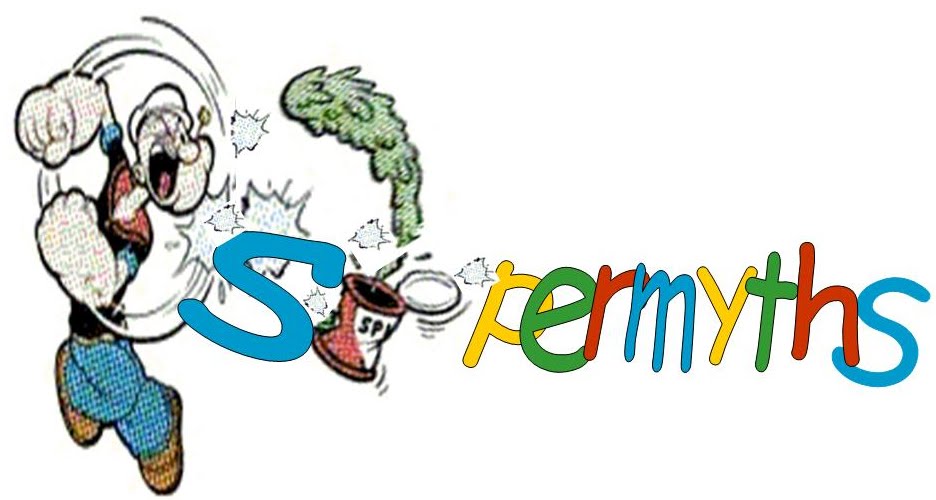
Supermyths are myths about myths that are created and compounded by experts, spread by pseudo-skeptics and destroyed by evidence. Braced myths are a sub-type of supermyth, created by orthodox expert authorities that are so powerful they are believed to be true by respected scholars who unwittingly promote them as examples of the need to be healthily sceptical of counterknowledge and then, with unintended irony, use them as argument winners to refute other fallacious knowledge.
The Dysology Hypothesis
Letting scholars get away with publishing fallacies and myths signals to others the existence of topics where guardians of good scholarship might be less capable than elsewhere. Such dysology then serves as an allurement to poor scholars to disseminate existing myths and fallacies and to create and publish their own in these topic areas, which leads to a downward spiral of diminishing veracity on particular topics.
Thursday 7 May 2020
Veracity v Myth and Matthew V Darwin in the invention of terraforming
Based on the Supermyth that Darwin and Wallace uniquely and independently discovered the natural process of selection, there is a related, daughter, myth that Charles Darwin, together with his botanical mentor and best friend Joseph Hooker uniquely invented terraforming by way of what they did on Ascension Island (e.g. that story here).
In reality it is Patrick Matthew, the plagiarized and cheated 1831 originator of the theory of natural selection, whose research and observations of nature provided the factual and theoretical base for terraforming.
When, in 1831, Matthew published his theory in his book On Naval Timber and Arboriculture, it contained, amongst other religious heresy at the time, the heresy that trees could grow better in other than their "natural" habitats when transplanted there by humans. This heresy was heretical because it went against then Christian doctrine that "God", as designer and creator, placed every living thing in its ideal location. Matthew's heresy here is probably just one of those that led his bombshell breakthrough book to be banned by Perth public Library in Scotland and for reviewers to demand readers not even think about his ruminations on the laws of nature. Indeed, Selby (a regular church-going Christian naturalist, who I, in 2014, 2014a, 2015 see my later 2016 paperback) uniquely discovered cited Matthew's book in 1842 and wrote that he could not understand this idea before going on to be chief editor of the journal that published Wallace's 1855 Sarawak paper. NOTE: My Selby discovery was later plagiarized in the Linnean Journal by Dagg The Jealous and Sly Plagiarist - facts here) and earlier by Weale who - though citing my help with his paper - failed to cite my research as the origin of the fact we now know the famous naturalist Selby cited Matthew's (1831) and the orignal ideas in it.
Selby wrote that he could not understand how it could be so that Matthew said trees could do better when grown outside their natural habitat. See Prideaux John Selby, A History of British Forest-Trees: Indigenous and Introduced, Van Voorst, London 1842. In this way, whether he really could understand it (but pretended otherwise to appease the powerful church) or not, Selby drew attention to Matthew's heresy. Later it was picked up upon as no more than an important fact for economic botany and cited prominently by William Hooker's (William being Joseph Hooker's father and also a friend of the Darwin and his wife) correspondent William Jameson in 1853 (facts here).
The United Service Journal and Naval and Military Magazine published an extended review in the 1831 Part II and 1831 Part III numbers of the magazine:
"But we disclaim participation in his ruminations on the law of Nature, or on the outrages committed upon reason and justice by our burthens of hereditary nobility, entailed property, and insane enactments."
In 1843, a year after Selby (1842) noted what Matthew had written abut some trees doing well outside their natural habitat, Joseph Hooker landed on Ascension Island (see here and here) and arranged for an abundance of different species of tree to be planted there.
Darwin and his cronies capitalized upon the opportunistic fact Matthew had been earlier silenced in the first half of the 19th century when the church was still in its ascendancy to steal his ideas. Indeed, while Matthew mocked the church and priests, in many editions of the Origin of Species Darwin kept the notion of "The Creator" in as a supernatural deity that created evolution by natural selection.
Labels:
Darwin,
Matthew,
Terraforming